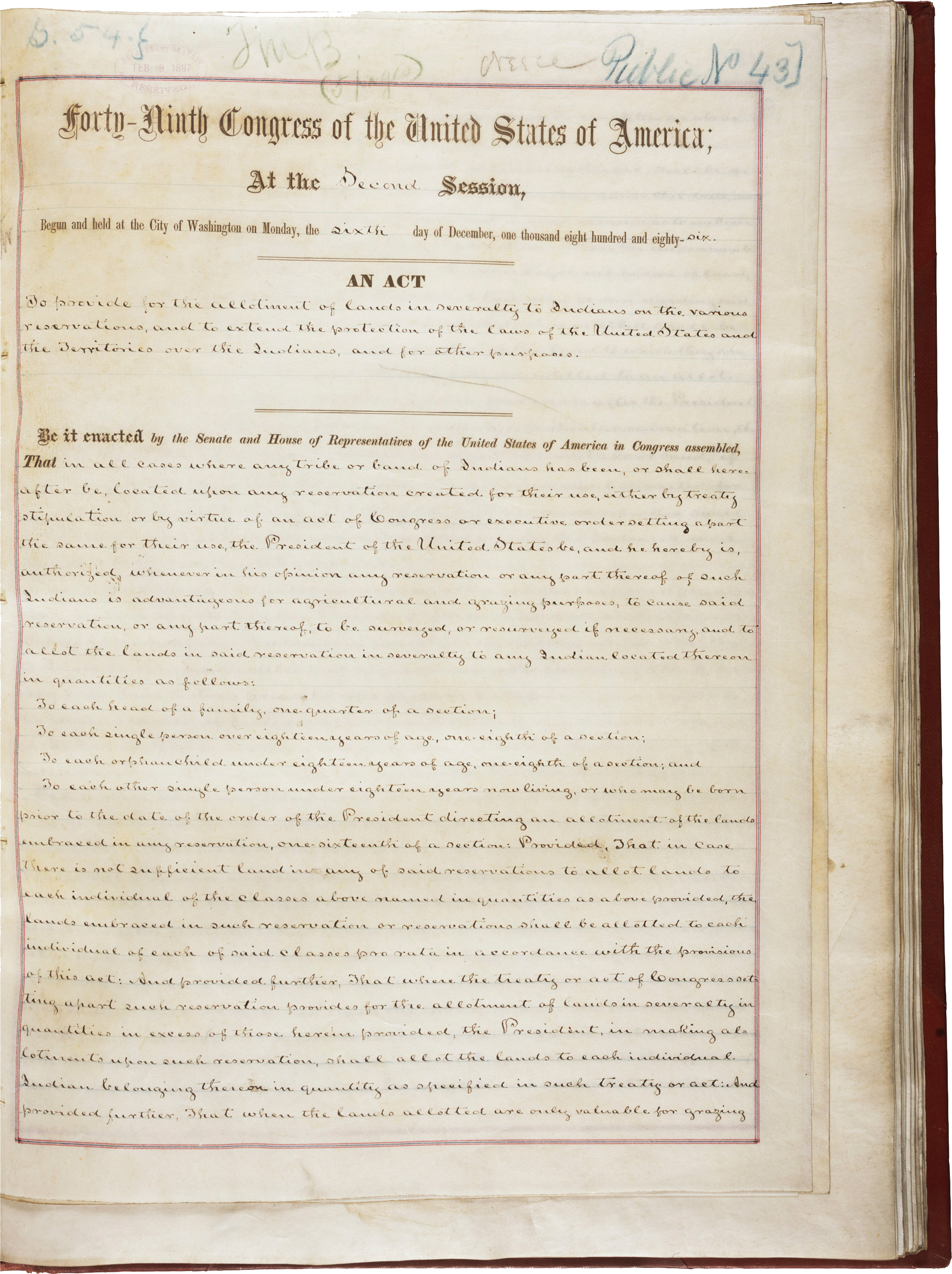Dawes Act of 1887 was passed by the United States Congress to break up tribal landholdings of Indigenous (native) Americans into small property units. It was also known as the General Allotment Act. Each eligible head of an Indigenous American household received 160 acres (65 hectares) of land. Most single Indigenous people got 40 acres (16 hectares) or 80 acres (32 hectares). Land that remained after all Indigenous people had received their shares was sold to white people, thus providing more land for settlement.

Through the Dawes Act, the U.S. government hoped to encourage Indigenous people to become farmers. But many Indigenous people had no knowledge of farming, and others had no interest in it. Also, much of the land allotted to Indigenous people was unsuitable for growing crops. Many Indigenous people sold their land.
